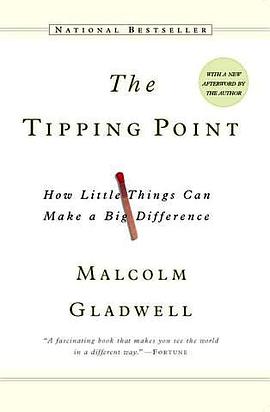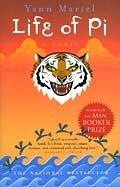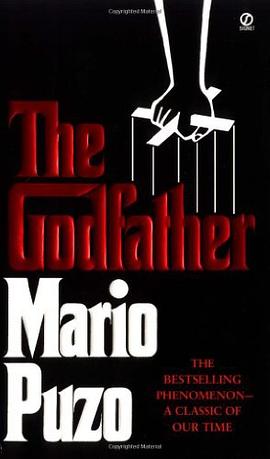

具体描述
"The best way to understand the dramatic transformation of unknown books into bestsellers, or the rise of teenage smoking, or the phenomena of word of mouth or any number of the other mysterious changes that mark everyday life," writes Malcolm Gladwell, "is to think of them as epidemics. Ideas and products and messages and behaviors spread just like viruses do." Although anyone familiar with the theory of memetics will recognize this concept, Gladwell's The Tipping Point has quite a few interesting twists on the subject.
For example, Paul Revere was able to galvanize the forces of resistance so effectively in part because he was what Gladwell calls a "Connector": he knew just about everybody, particularly the revolutionary leaders in each of the towns that he rode through. But Revere "wasn't just the man with the biggest Rolodex in colonial Boston," he was also a "Maven" who gathered extensive information about the British. He knew what was going on and he knew exactly whom to tell. The phenomenon continues to this day--think of how often you've received information in an e-mail message that had been forwarded at least half a dozen times before reaching you.
Gladwell develops these and other concepts (such as the "stickiness" of ideas or the effect of population size on information dispersal) through simple, clear explanations and entertainingly illustrative anecdotes, such as comparing the pedagogical methods of Sesame Street and Blue's Clues, or explaining why it would be even easier to play Six Degrees of Kevin Bacon with the actor Rod Steiger. Although some readers may find the transitional passages between chapters hold their hands a little too tightly, and Gladwell's closing invocation of the possibilities of social engineering sketchy, even chilling, The Tipping Point is one of the most effective books on science for a general audience in ages. It seems inevitable that "tipping point," like "future shock" or "chaos theory," will soon become one of those ideas that everybody knows--or at least knows by name. --Ron Hogan, Amazon.com
作者简介
Malcolm Gladwell is a former business and science writer at the Washington Post. He is currently a staff writer for The New Yorker.
目录信息
读后感
书的内容暂时不表!在这里通缉一下中信出版社! 原著写于2000年出头。中信出版社在2002年就已翻译出版过此书!原名《引爆流行》。本是旧书出新颜,无可厚非!但换包装,换书名,不惜浪费国内出版行业最稀缺的ISBN资源换刊号,隐性的提高售价(原书18,现书30元),以上种种来博...
评分这本书的作者格拉德威尔提出一个论点,我们能不能人为的让一件产品,一件事情或者一种观念迅速的流行起来。 要制造流行,首先要了解什么是流行。流行有3个属性特征(Page:xxv),我个人用“流行感冒”来进行映照理解。 特征1,传染性。很容易在人与人之间引起传播。 特...
评分以《Gladwell导读》为题目发在NewYorkerFans小组http://www.douban.com/group/ny/ 另有Gladwell在《纽约客》历年文章精品 Xmeansme 很多人知道Malcolm Gladwell乃是Blink(台版译名:决断两秒间)和Tipping Point(引爆流行)这两本纽约时报榜首...
评分以《Gladwell导读》为题目发在NewYorkerFans小组http://www.douban.com/group/ny/ 另有Gladwell在《纽约客》历年文章精品 Xmeansme 很多人知道Malcolm Gladwell乃是Blink(台版译名:决断两秒间)和Tipping Point(引爆流行)这两本纽约时报榜首...
评分理论论叙太多,看不到亮点。 本书只能做为已发生的现象分析,没有从中学到,到底要做什么事才有可能会引爆流行。 中文译本翻译错误还是有蛮多。 个人觉得本书如果叫《群体效应》可能会更贴主题。
用户评价
完全名过其实的一本书。全书可以用一页讲完:流行靠关键节点、感染力以及具体环境。然而作者靠车轱辘话翻来覆去(注意了这人是来事的关键,上节咱们说了这人很关键,都听好了要来事就得跟上上章的这人学!),堆砌许多不相关的案例(有些和epidemics根本没关系),能拉长到一本书。这书本质上是市场营销书,以稀释过的社会学和心理学为卖点。就像培训师一样,案例越多越好,重复越多次越好,正说反说掰碎了说,抖个机灵卖个新鲜,而读者大可不必深入思考。这种文风适合公开演讲,适合去TED,不适合写书。在听这本书之前,我刚听了另一本畅销书Freakonomics。两本书都以通俗社会科学作为主题,都谈到纽约90年代犯罪率反常下降、父母对子女后天影响其实有限等话题,相比较本书的解释分析就要浅尝辄止得多。
评分看了一半
评分对一个做营销的人来说挺有应用意义的。感觉书前半部分写得不错,后半部分就是把前半部分讲的东西颠过来倒过出重复讲。。。
评分完全名过其实的一本书。全书可以用一页讲完:流行靠关键节点、感染力以及具体环境。然而作者靠车轱辘话翻来覆去(注意了这人是来事的关键,上节咱们说了这人很关键,都听好了要来事就得跟上上章的这人学!),堆砌许多不相关的案例(有些和epidemics根本没关系),能拉长到一本书。这书本质上是市场营销书,以稀释过的社会学和心理学为卖点。就像培训师一样,案例越多越好,重复越多次越好,正说反说掰碎了说,抖个机灵卖个新鲜,而读者大可不必深入思考。这种文风适合公开演讲,适合去TED,不适合写书。在听这本书之前,我刚听了另一本畅销书Freakonomics。两本书都以通俗社会科学作为主题,都谈到纽约90年代犯罪率反常下降、父母对子女后天影响其实有限等话题,相比较本书的解释分析就要浅尝辄止得多。
评分重新读一次
相关图书
本站所有内容均为互联网搜索引擎提供的公开搜索信息,本站不存储任何数据与内容,任何内容与数据均与本站无关,如有需要请联系相关搜索引擎包括但不限于百度,google,bing,sogou 等
© 2025 book.wenda123.org All Rights Reserved. 图书目录大全 版权所有




















